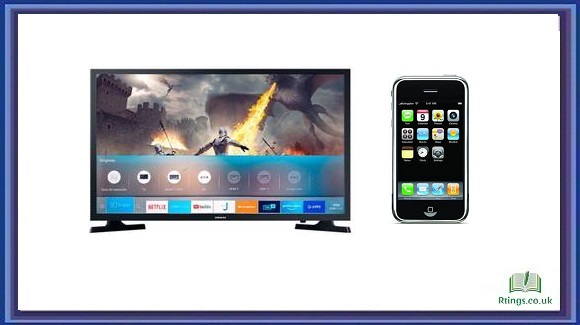Buying a TV can be a complex and overwhelming task, with a wide range of options available in the market. From size and budget to technology and brand reputation, there are several factors to consider when choosing the right TV for your home. This comprehensive guide will discuss what to look for when buying a TV and help you make an informed decision.
Screen Size and Resolution
The screen size and resolution are the first things to consider when buying a TV. TV screen sizes are measured diagonally; the most common sizes range from 32 to 65 inches or larger. The size of the TV you choose will depend on the size of your room and the distance you sit from the screen.
When it comes to resolution, the two most common options are Full HD (1080p) and 4K Ultra HD (2160p). Full HD offers a 1920 x 1080 pixels resolution, while 4K Ultra HD offers a resolution of 3840 x 2160 pixels, four times the resolution of Full HD. A 4K Ultra HD TV will provide a clearer and more detailed picture, especially when viewing high-definition content.
Picture Quality
Picture quality is another important factor to consider when buying a TV. This includes the TV’s clarity, detail, color accuracy, and overall image quality. Some technologies to look for when evaluating picture quality include HDR (High Dynamic Range), OLED (Organic Light-Emitting Diodes), and QLED (Quantum Dot Light-Emitting Diodes). HDR enhances the contrast and color accuracy of the TV, providing more vivid and lifelike images. OLED TVs offer perfect black levels and higher contrast, while QLED TVs provide higher brightness and more vivid colors.
Sound Quality
Sound quality is also an important aspect to consider when buying a TV. The built-in speakers of a TV can be adequate for some users, but many people prefer to use a soundbar or home theatre system for a better audio experience. When evaluating the sound quality of a TV, consider the number and type of speakers, the sound volume, and the overall sound quality.
Build Quality
Build quality refers to the durability and longevity of the TV, as well as its design and aesthetics. Look for a TV with a sturdy and well-built design, and consider the materials used in the construction of the TV. A well-made TV should last for several years, even with regular use.
Smart TV Features
Many modern TVs come equipped with Smart TV features, which allow you to access streaming services like Netflix, Amazon Prime Video, and more. When evaluating the Smart TV features of a TV, consider the type and number of apps available, the user interface, and the ease of use. Some Smart TVs also come with voice control and integration with smart home devices, providing a more convenient and seamless experience.
Brand Reputation
Finally, brand reputation is an important factor to consider when buying a TV. A good brand reputation indicates that the brand has a history of producing high-quality products that meet customer expectations and provides good customer support. Research different brands and read customer reviews and feedback to ensure that you are making an informed decision.
Conclusion
When buying a TV, it’s important to consider several key factors, including screen size and resolution, picture quality, sound quality, build quality, Smart TV features, and brand reputation. Consider your specific needs and preferences, such as size, budget, and desired features, and research different brands and compare their products to find the best TV that meets your needs and budget.
Frequently Asked Questions
What screen size should I choose when buying a TV?
A TV’s screen size is measured diagonally; the most common sizes range from 32 inches to 65 inches or larger. The size of the TV you choose will depend on the size of your room and the distance you sit from the screen. A general rule of thumb is to choose a TV with a screen size proportional to the length you sit from it. A TV with a larger screen size is ideal for a larger room, while a smaller screen size is suitable for a smaller room.
What is the difference between Full HD and 4K Ultra HD resolution?
Full HD offers a 1920 x 1080 pixels resolution, while 4K Ultra HD offers a resolution of 3840 x 2160 pixels, four times the resolution of Full HD. A 4K Ultra HD TV will provide a clearer and more detailed picture, especially when viewing high-definition content. If you want a TV with the highest possible picture quality, a 4K Ultra HD TV is the way to go.
What is HDR, and why is it important when buying a TV?
HDR (High Dynamic Range) enhances the contrast and color accuracy of the TV, providing more vivid and lifelike images. HDR is particularly important for content with a wide range of color and brightness, such as nature and action scenes. When buying a TV, look for one with HDR support to get the most out of your viewing experience.
What is the difference between OLED and QLED technology?
OLED (Organic Light-Emitting Diodes) and QLED (Quantum Dot Light-Emitting Diodes) are popular technologies used in modern TVs. OLED TVs offer perfect black levels and higher contrast, while QLED TVs provide higher brightness and more vivid colors. The technology you choose will depend on your personal preferences and needs.
Is it necessary to have a Smart TV feature when buying a TV?
A Smart TV feature allows you to access streaming services like Netflix, Amazon Prime Video, and more. While having a Smart TV feature is not necessary, it can be a convenient addition to your TV if you use streaming services frequently. When evaluating the Smart TV features of a TV, consider the type and number of apps available, the user interface, and the ease of use.






